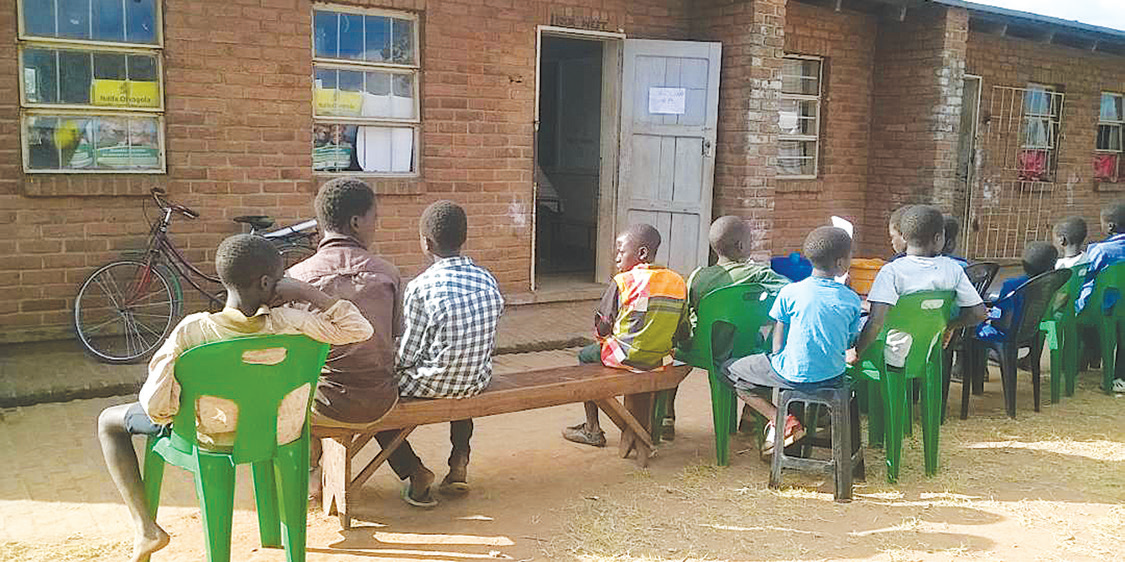Silent crisis
Despite the country’s adult population having a low HIV prevalence of 7.1 percent, statistics show that prevalence is still high among men sleeping with men (MSM), sex workers, transgender and people who inject themselves with drugs.
Parliamentary Committee on Health chairperson Mathews Ngwale told Weekend Nation on Thursday that if such populations are not targeted with interventions, the country remains under threat.
As of December, 2022, HIV prevalence among an estimated population of 39 000 female sex workers was 49.9 percent while among a population of 35 400 MSM it was 12.8 percent.
The statistics from the National Aids Commission (NAC) further show that among a population of 8 400 who inject themselves with drugs, the prevalence stood at 27.0 percent and 13.8 percent among a transgender group of 4 900.

Said Ngwale: “But as you know very well, the issue of men who have sex with other men is a subject matter which is very sensitive in this country. And to be seen to be spending money on those people, it’s something that people don’t want to hear.”
Nonetheless, he indicated that there are programmes that NAC is undertaking to curb further spread of the virus, adding that the prevalence among the groups is high because they are closed.
Said Ngwale: “There are some men who sleep with other men but also sleep with women, so the closeness of this population may even include these women. So yes, there is transmission but it is a slow transmission, that’s why the gap between the general population and these groups is wide because of the closed nature.
NAC chief executive officer Beatrice Matanje, in a response to a questionnaire, said such people are at an increased risk of acquiring or transmitting HIV.
She added that the key populations often have legal and social issues related to their behaviours that increase their vulnerability to HIV-infection and poor treatment outcomes.
Said Matanje: “These social and legal issues, including stigma and discrimination, violence by both State and non-State actors, and restrictive laws as well as policies, constitute barriers to access and uptake of health services, including HIV testing, care, and treatment services.”
But she said for as far back as nine years NAC has systems to track key population estimates, HIV-prevalence, incidence and service uptake.
She also disclosed that a new key population size estimate and Biological and Behavioural Surveillance(BBS) study is underway, its overarching objectives are to estimate HIV prevalence, viral load suppression, population size, and progress toward achieving the UNAids 95-95-95 and specific key population targets in the country.
In the UNAids Global Aids Strategy, UNAids has set 95-95-95 targets aiming for 95 percent of people living with HIV to know their HIV status, 95 percent of people who know that they are living with HIV to be on life-saving antiretroviral treatment, and 95 percent of
people who are on treatment to be virally suppressed.
Matanje also indicated that strategic guidelines and policies have been developed to create a conducive environment for programming, thereby improving access to and uptake of high-quality HIV prevention and treatment services among key population individuals and their sexual partners in the country.
In addition, she said NAC, in collaboration with the Ministry of Health, has developed a Minimum Service Package for key populations and the Standard Operating Procedures for healthcare providers when assisting key population access HIV and Aids services.
Commenting on the issue, Centre for Development of People executive director Gift Trapence commended government for a comprehensive HIV programme, reaching out to key populations.
He said the country has thousands of key populations on treatment and receiving different friendly services including oral and injectable prep.
Said Trapence: “We are also happy that different stakeholders have started addressing structural barriers to friendly services and started addressing violence against key populations which is a big step in making sure that key populations are also protected from violations of their rights.”
On his part, public health expert Maziko Matemba, who is Health and Rights Education Programme executive director said the country needs to have an honest conversation, since if the groups are not well-targeted, the country can have a reversal of the progress made in meeting the UNAids 95-95-95 and UHC 2030.
Said Matemba: “Time has come for Malawi to relook at the progress and investment made on key populations with an honest approach for better results and impact.”
Statistics from NAC show that new HIV infections have been reduced by 88 percent since the peak in 1993 as 15 630 people were newly-infected in 2022 compared to 130 880 people in 1993.
The data also show that since 2010, new HIV infections have declined by 72 percent from 56 054 to 15 720 in 2022.
New HIV infections among children have also declined by 82 percent since 2010, from 15 561 to 2 792 in 2022.
The statistics indicate that women and girls accounted for 61 percent of all new infections in 2022 with 33 percent being women while 21 percent were among adolescent girls and young women.
Aids-related deaths have reduced by 85 percent since the peak in 2003.
In 2022, around 11 931 people died from Aids-related illnesses, compared to 77 319 people in 2003.






RarRa
Hello there! This is kind of off topic but I need some guidance from
an established blog. Is it difficult to set up your own blog?
I’m not very techincal but I can figure things out pretty fast.
I’m thinking about creating my own but I’m not sure where to
begin. Do you have any tips or suggestions? With thanks